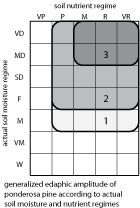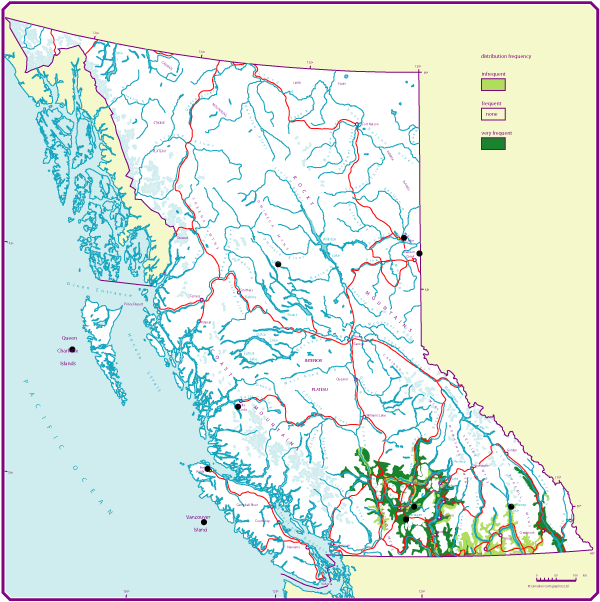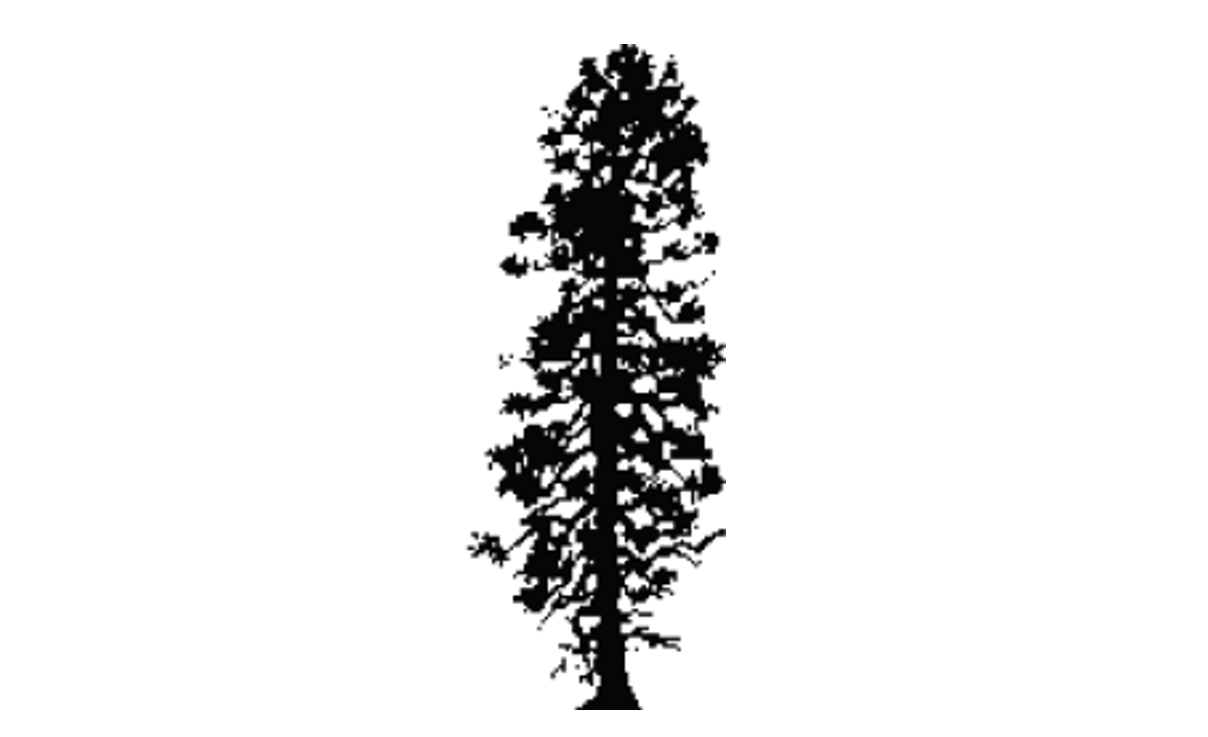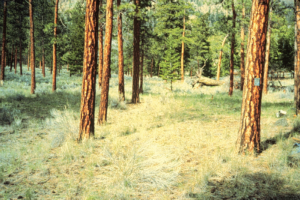Ponderosa pine
On this page
- Geographic range and ecological amplitudes
- Tolerances and damaging agents
- Silvical characteristics
- Genetics and notes
Geographic range and ecological amplitudes
Description
Ponderosa pine is a medium- to large-sized (rarely >40m tall) evergreen conifer at maturity with a moderately dense, conical crown, long branches, and orange-brown, deeply fissured bark. It is an important timber species, but open-canopy ponderosa pine forests are also important as wildlife habitat, watersheds, and for livestock grazing and recreational use.
Geographic range
Geographic element:
North American/Pacific, Cordilleran, and Central
Distribution in Western North America:
(central) and south in the Pacific region; central and south in the Cordilleran region
Ecological amplitudes
Climatic amplitude:
(subalpine boreal) - (semiarid) - (cool) warm temperate - (cool) warm mesothermal - dry tropical
Orographic amplitude:
montane - subalpine
Occurrence in biogeoclimatic zones:
(lower southern ESSF), (southern MS), PP, southern IDF, (southern ICH)
Edaphic amplitude

Range of soil moisture regimes:
(extremely dry) - very dry - moderately dry - slightly dry - fresh - (moist)
Range of soil nutrient regimes:
poor - medium - rich - very rich; calciphytic inclinations
The soils in which ponderosa pine grows cannot be of a very fine texture, otherwise either grasses (mainly Agropyron and Stipa spp.) or shrubs (mainly Artemisia and Arctostaphylos spp.) would become the main users of available water and a grassland community would develop. In contrast to fine-textured soils, coarse-textured soils allow a higher permeability, deeper penetration, and greater water storage which may be reached only by the roots of trees. It was concluded from field and experimental studies that ponderosa pine is a very demanding species as it required larger quantities of available nitrogen (mainly in the form of nitrates), magnesium, calcium, and potassium than any other tree species studied by Murison (1960) and Krajina (1969). Its slightly lower demands for phosphorus could be considered advantageous for growing in alkaline soils where phosphorus availability is low. Ponderosa pine was found to have similar responses to deficiency treatments as western white pine.
Tolerances and damaging agents
Root system characteristics
Ponderosa pine develops deep taproots (up to 50cm in watered soils in the first growing season). Mature trees have roots to depths of more than 200cm in coarse-textured soils but less than 100cm in fine-textured soils. In open-canopy stands lateral roots may extend 46m. The main root mass is concentrated within the top 60cm. Roots of ponderosa pine are associated with both ecto- and endo-mycorrhizae.
| Tolerance to | Tolerance class | Comments |
|---|---|---|
| low light | L | possibly intermediate in the ecotone between temperate and semiarid climates |
| frost | M | absent on sites with growing season frost |
| heat | H | protection-requiring in the ecotone between temperate and semiarid climates |
| water deficit | H | very frequent on very dry sites |
| water surplus | H | tolerates short-term inundation - present on coarse-skeletal, high floodplain benches |
| nutrient (mainly N) deficiency | M | absent in very poor, acid soils |
| Damaging agent | Resistance class | Comments |
|---|---|---|
| snow | M | does not tolerate heavy snowpack |
| wind | H | deeply rooted |
| risk class | ||
|---|---|---|
| fire | M | easily survives ground fires when mature |
| insect | M | mountain pine beetle, pine engravers (Ips spp.) |
| fungi | M | western gall rust; root and butt rots not a serious concern (for example, red ring rot, Armillaria root disease, annosus root and butt rot) |
| other agents | M | dwarf mistletoes (Arceuthobium spp.); rabbits, hares, pocket pocket gophers |
Associated tree species and successional role
In British Columbia, ponderosa pine grows predominantly in pure stands that consist of many small, even-aged cohorts as a result of frequent ground and crown fires. It is present in early, mid-, and late stages of secondary succession; it is a variable component in old-growth stands in the IDF zone and the only component in the PP zone.
| Associated tree species | Occurance class | Major area of occurance |
|---|---|---|
| common douglas | M | Southern IDF |
| lodgepole pine | L | Southern IDF |
| western larch | L | Southern IDF |
Genetics and notes
Genetics
Ponderosa pine shows distinct geographic variation over its wide range. Provenance studies have revealed genetic variation within and between var. ponderosa and scopulorum in a number of characters.
Notes
Ponderosa pine is a productive and desirable species considering its drought tolerance and its rapid growth, which remains fairly constant for a long time provided trees are given adequate growing space. More detailed silvics information is given by:
Oliver, W.W. and R.A. Ryker. 1990. Pinus ponderosa. Pp. 413-424 in R.M. Burns and B.H. Honkala (technical coordinators ) Silvics of North America, Vol. 1. Agri. Handbook 654, USDA For. Serv., Washington, D.C.
Other information:



